| |
 |
| |
|
|
|
|
|
|
|
|
|
|
|
|
|
|
|
|
|
|
|
|
 |
 |
|
|
|
| |
Subscribe to
What's New @
Ecotoursm Laos. |
|
|
|
|
|
|
|
|
An online guide, “The Tea Caravan Trail”, is now available for visitors entering Laos from Chiang Rai, Thailand and heading to Luang Namtha Town via the paved 180-km Lao Route 3 in the nation’s northwest mountains.
The 52-page guidebook features 10 natural, cultural, and historical highlights along the way, including a French fort, handicraft villages, visitor centres, ancient ruins, mountaintop viewpoints, nature trails, a cave, and waterfalls.
Also inside the guide are suggested community-based tourism stopovers in Bokeo and Luang Namtha Provinces, and information on local festivals, the Nam Ha and Nam Kan National Protected Areas, the region’s ethnic diversity, and local handicrafts.
To download “The Tea Caravan Trail” guide, click here.
To download an article, “The Tea Caravan Trail” published in Pata Compass magazine, click here |
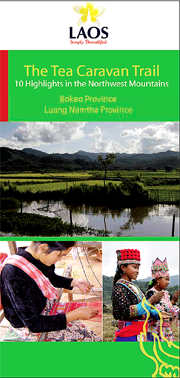 |
Vientiane’s 450th anniversary celebration as the Lao capital will lead up to this year’s annual That Luang Festival, being held on Sunday, 21 November. The seven-day event, running from 15-21 November, features games, rides, clothes and food stalls, and fireworks displays joining a trade fair showcasing Laos’ tourism attractions, activities, and handicrafts at the That Luang grounds.
Buddhist faithful from around the country make their pilgrimage to the golden That Luang Stupa, the nation’s most revered religious site, to present alms to the monks and make merit. At the same time, the nation will celebrate Vientiane’s longstanding status as the Lao capital, having moved from Luang Prabang, which stood as the Lane Xang Kingdom’s center at its founding in the 14th century.
For more information, visit www.tourismlaos.org. |
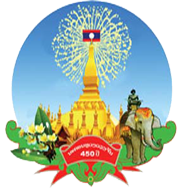
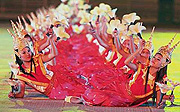
|
Those who attended this year’s Mekong River Boat Races in Vientiane on 24 October had the chance to walk along much off the three-kilometre-long, 14.5-hectare Chao Anouvong Park, which runs along the capital’s Mekong River bank.
The wide, brick promenade meanders through landscaped gardens and large grass, tree-shaded picnic and park areas. Shops and restaurants are clustered near the central tourist district. When completed, Chao Anouvong Park will be able to seat 4,000 for major events and include a statue of Chao Anouvong, the Lao king from 1767 to 1835.
For more information, visit www.tourismlaos.org. |
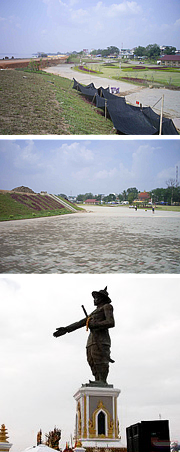
|
|
Travel-Review.com, an online magazine targeting Eastern Europeans, highlighted Laos in its November issue’s special section on ethical travel and fair trade. “Laos’ Fair Fare” by Bernie Rosenbloom places today’s tourism situation in the context of the original Nam Ha Ecotourism Project, and shows where the money goes.
The article shows how Laos has adapted the Nam Ha model to mainstream tourism by following the ADB-GMS Tourism Sector Strategy, in which tourists can access pro-poor, community-based tourism by road. Examples include The Tea Caravan Trail along Laos Route 3 in the country’s northwest, The Northern Heritage Route from Luang Prabang to Viengxay’s Hidden Cave City via the Plain of Jars, Konglor Cave, and The Savannakhet Historic Trail.
To download “Laos’ Fair Fare”, click here.
For guidebooks and brochures on responsible tourism in Laos, click here. |
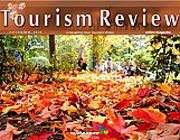
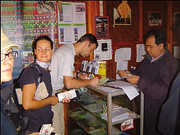
|
|
|

